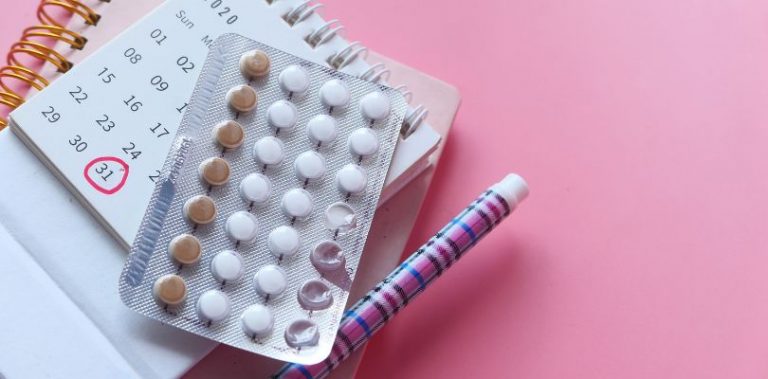Medical & Natural Options for Birth Control
Birth control, also known as contraception, is a method to prevent pregnancy. The options for birth control range from medical methods to natural techniques, each with varying degrees of effectiveness. In this article, we will explore some of the most commonly used birth control methods, combining both medical and natural approaches. We will also look at Nextstellis, a new combined hormonal oral contraceptive prescription medication.
Medical Methods of Birth Control
1. Oral Pills
The birth control pill is a medication women take daily to prevent pregnancy. There are two main types: the combined pill, which contains estrogen and progestin, and the mini-pill, which contains only progestin. The combination pills work by preventing ovulation, thickening cervical mucus to block sperm and thinning the lining of the uterus to prevent implantation. The mini-pill primarily works by thickening cervical mucus. When used correctly, the pill is over 99% effective.
2. IUDs (Intrauterine Devices)
IUDs are small, T-shaped devices inserted into the uterus by a healthcare provider. They come in two main types: hormonal and copper. The hormonal IUD releases progestin, which thickens cervical mucus and thins the uterine lining, while the copper IUD releases copper ions toxic to sperm. IUDs can remain in place for 3-10 years, depending on the type, and are more than 99% effective at preventing pregnancy.
3. Condoms
Male condoms are a barrier method made of latex or synthetic materials that cover the penis during intercourse, preventing semen from entering the vagina. Female condoms are worn inside the vagina. Condoms also offer protection against sexually transmitted infections (STIs). When used correctly and consistently, male condoms are about 98% effective and female condoms are about 95% effective at preventing pregnancy.
4. Patches
The contraceptive patch is a small adhesive patch that releases hormones (estrogen and progestin) through the skin into the bloodstream. It works similarly to the combined pill, preventing ovulation and thickening cervical mucus. The patch is worn for a week at a time for three consecutive weeks, followed by a patch-free week. When used correctly, it's more than 99% effective.
5. Implants
The contraceptive implant is a small rod that's inserted under the skin of the upper arm. It releases progestin to prevent ovulation, thicken cervical mucus and thin the lining of the uterus. The implant is effective for up to three years and offers more than 99% effectiveness.
6. Nextstellis
Nextstellis is a combination birth control pill that includes a new form of progestin, called drospirenone, and estetrol, a native estrogen produced by the human fetal liver. This pill prevents pregnancy with an effectiveness similar to other combined oral contraceptives – over 99% with ideal use.
Related Search Topics (Ads)
7. Sterilization Methods
There are two forms of sterilization: vasectomy and tubal ligation. A vasectomy is a permanent form of birth control for men, which involves cutting or sealing the vas deferens to prevent sperm from reaching the semen. The procedure is typically done under local anesthesia and does not affect a man’s ability to have an erection or ejaculate. It's more than 99% effective at preventing pregnancy once confirmed that no sperm are present in the ejaculate.
Tubal ligation, often referred to as "getting your tubes tied," is a permanent form of birth control for women. The procedure involves cutting, tying or sealing the fallopian tubes to prevent eggs from reaching the uterus. It is performed under general anesthesia and is also more than 99% effective.
Natural Ways to Prevent Pregnancy
While medical methods tend to be more reliable, they may come with side effects or may not be appropriate for everyone due to health conditions or personal preferences. Natural methods require no drugs or devices but require more self-awareness and discipline.
1. Calendar Method
The calendar method, also known as the rhythm method, involves tracking a woman’s menstrual cycle to predict ovulation and refraining from intercourse during the fertile window. This method requires meticulous record-keeping and consistency. Its effectiveness varies widely from 76% to 88%, depending on how regular a woman’s cycles are and how accurately she tracks them.
2. Temperature Method
The temperature method involves measuring a woman’s basal body temperature (BBT) every morning before getting out of bed. BBT typically rises slightly after ovulation. By tracking these changes over several cycles, it's possible to predict fertile days. Abstinence or using another form of birth control during these days can help prevent pregnancy. When used correctly, the temperature method is about 75-99% effective.
3. Cervical Mucus Method
Also known as the Billings method, this involves observing changes in the cervix's mucus throughout the menstrual cycle. Immediately after menstruation, there are generally a few dry days with little or no mucus. As ovulation approaches, mucus becomes clearer, stretchier and more slippery – indicating fertile days. Abstaining from sex or using a barrier method during this time can help prevent pregnancy. It’s about 76-88% effective with proper use.
Final Notes
When choosing a birth control method, it's essential to consider personal lifestyle, health history, convenience, cost and comfort level. Consulting with a healthcare provider can help individuals or couples select the most appropriate method for their needs. It's important to remember that no method of birth control is 100% effective and the best method is one that fits well with an individual's life and is used correctly every time.

